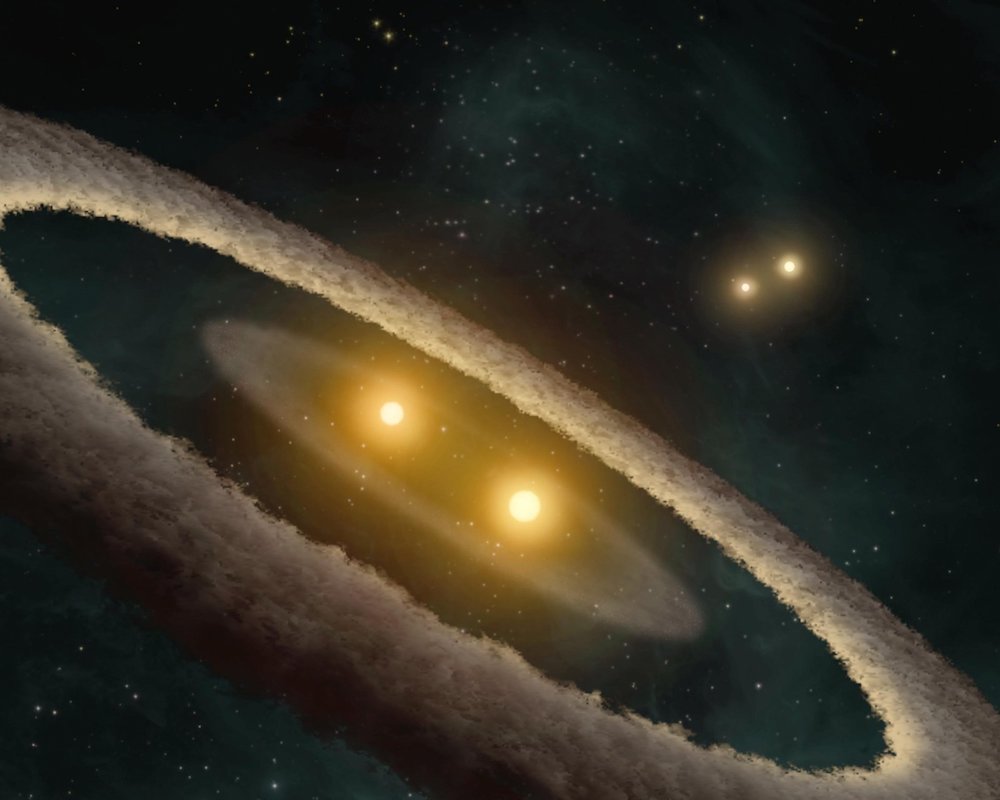Create a free profile to get unlimited access to exclusive videos, sweepstakes, and more!
Tatooine has nothing on the 97 quadruple star systems TESS just found
…and it nearly doubles the number of known quadruple systems.

Sunsets on Tatooine are literally otherworldly, but imagine if you were standing on an alien planet at dusk, watching twice as many stars sink into the horizon.
NASA’s TESS (Transiting Exoplanet Survey Satellite) has now found almost a hundred quadruple star system candidates in the vast expanse of sky it observes. While its main mission is still to seek out exoplanets that pass in front of their stars, its wide-field cameras have seen so far across the sky that they have come across more than just planets. You know a spacecraft that has been able to look at 85% of the sky is going to keep finding things to beam back.
Using AI and human eyes, 97 of these quadruple star system candidates were found in the latest TESS data. So much data needed analysis that researchers from NASA’s Goddard Space Flight Center and the MIT Kavli Institute joined forces with any citizen scientists who were willing to help with the effort. Astrophysicist Veselin Kostov of Goddard led a study, recently uploaded to the preprint server arXiv, on how these potential double Tatooines were identified.
“There are multiple obstacles that are produced by astrophysical, instrumental, and/or systematic sources,” he told SYFY WIRE. “To rule out false positives, we first evaluated the pixel-by-pixel TESS lightcurves to see where the signal of the quadruple candidate comes from.”
TESS light curves had to be analyzed pixel by pixel. Because it has such a broad field of vision, just one TESS pixel can mean a great distance out there. This is why interactions between objects that take only months or years (versus many human lifetimes) for us to observe must exist in the same pixel. Unfortunately, false positives were an issue. Kostov and his colleagues had to figure out whether the signal for each potential quadruple system came from the pixels the target star was in. Sometimes it came from other stars that were already resolved.
After the resolved stars were ruled out, the researchers took a closer look at the positions of the remaining signals for possible quadruple systems. These signals were actually eclipses. Quadruple star systems can be identified by two pairs of eclipsing binary stars. To qualify as eclipsing binaries, the stars in each pair have to orbit in a way that it appears as if one is hidden behind the other, at least as we see them from Earth. Making this out can be confusing. Sometimes, surrounding stars are too close for the targets to be distinguished from them.
“We evaluated the sub-pixel position of the source of the detected eclipses by measuring the motion of the center of light on the detector during each set of eclipses, and ruled out more false positives due to unresolved sources,” said Kostov.
The quad system candidates that ultimately made it into that group of 97 all had sets of eclipsing binaries whose likely orbital periods were relatively close to each other. This way, changes will be observable within a few decades, a stretch of time short enough for them to be confirmed as quadruple star systems. Those whose orbital periods were found to be too far away from each other could take hundreds of years, maybe thousands, to show the changes in behavior that would give them away as actual quads. We don’t live long enough for that.
Besides being cooler than anything in the Star Wars universe, quadruple star systems could tell us more about how they impact stellar evolution in our own universe. Phenomena like type Ia supernovas, which are binary systems involving at least one white dwarf star (the other star can be anything), and the common envelope phenomenon, in which one star spirals towards another in the same gaseous envelope, already tell us more about how the cosmos formed and evolved over aeons. Imagine what systems with two sets of binary stars might reveal.
“Systems of two or more stars that are close enough to interact with each other can and do affect each other's evolution, and produce outcomes that are difficult or even impossible for single stars to reach,” Kostov said.
If only Earthlings knew what it was like to experience a four-star sunset.


























